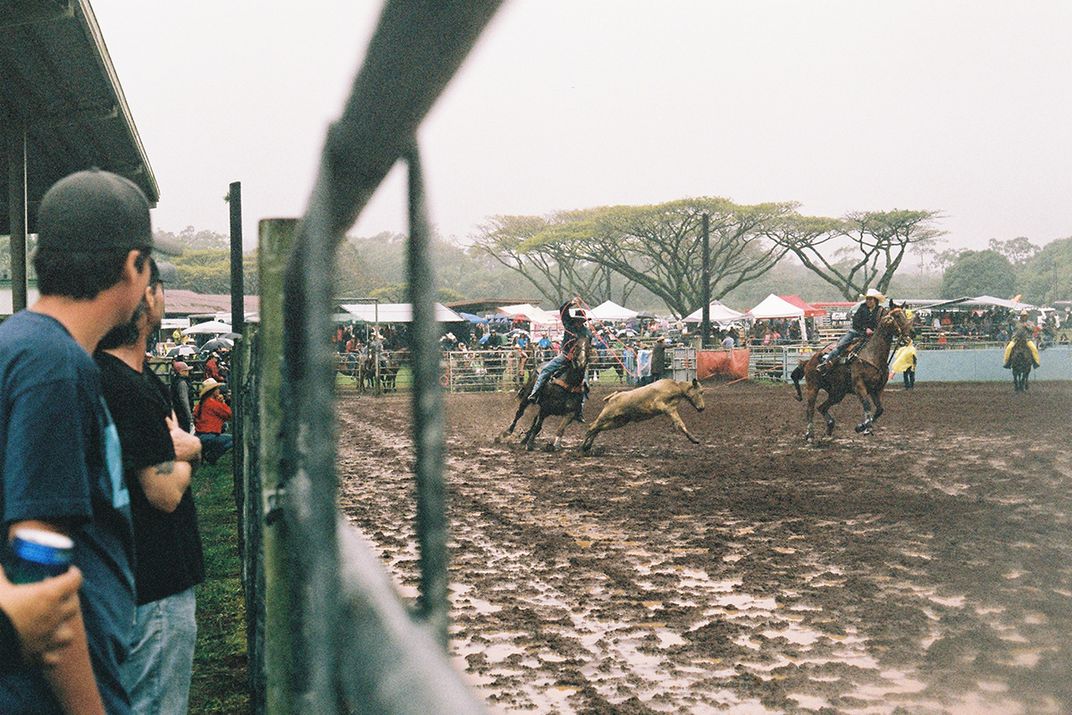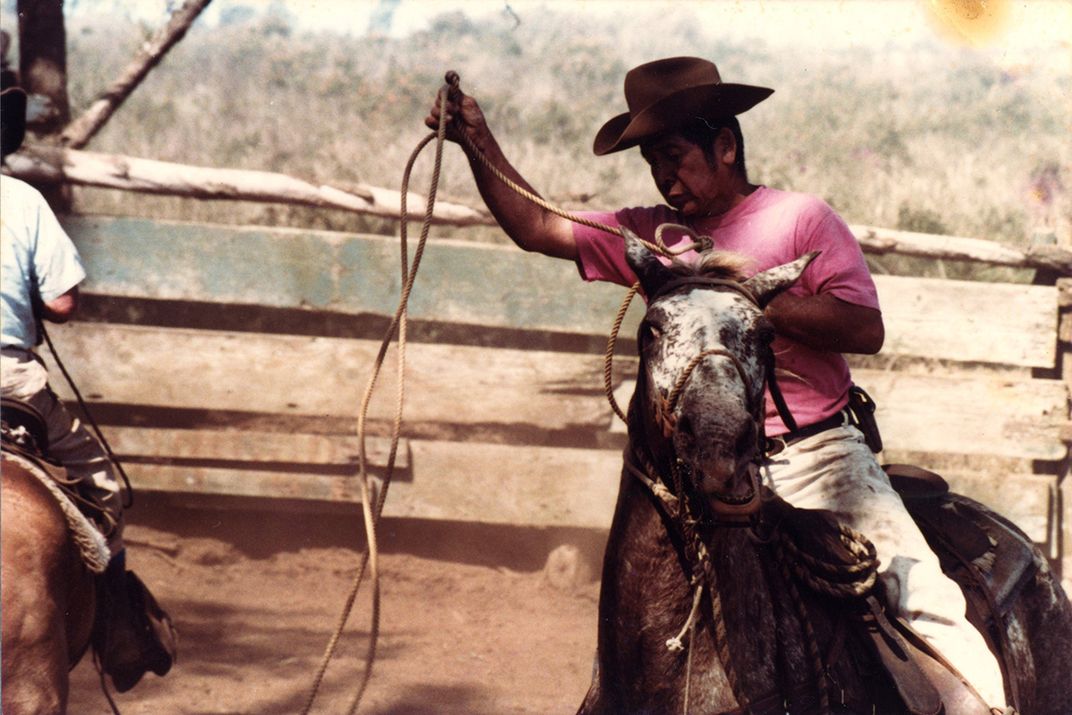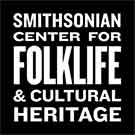SMITHSONIAN CENTER FOR FOLKLIFE & CULTURAL HERITAGE
Cowboys in the Tropics: A History of the Hawaiian Paniolo
In 1793, while Hawai‘i was still an independent republic, British Captain George Vancouver gifted King Kamehameha I a small amount of cattle that quickly multiplied. In the early nineteenth century, several Mexican vaqueros (cowboys) were sent to the islands to teach Hawaiians how to ride horses and maintain the cattle. Roping cattle and riding horses seem fitting in the prairie grasslands of Oklahoma, but the Hawaiian style of cowboy traditions is unique to the landscape.
/https://tf-cmsv2-smithsonianmag-media.s3.amazonaws.com/blogging/featured/img017.jpg)
One of the interesting qualities of an island is that it’s easy to weed out what is native and what has been transplanted. Such is the case with the paniolo, or Hawaiian cowboy.
In 1793, while Hawai‘i was still an independent republic, British Captain George Vancouver gifted King Kamehameha I a small amount of cattle that quickly multiplied. In the early nineteenth century, several Mexican vaqueros (cowboys) were sent to the islands to teach Hawaiians how to ride horses and maintain the cattle. Roping cattle and riding horses seem fitting in the prairie grasslands of Oklahoma, but the Hawaiian style of cowboy traditions is unique to the landscape. Early photographs and footage of Hawaiian cowboys express a new style of cowboying, one specific to a tropical island.
The paniolos inspired not only ways of riding and ways of dress but a repertoire of cowboy songs infused with classic Hawaiian slack-key guitar and vocals. A native of Pololu Valley on the Big Island, Clyde “Kindy” Sproat masterfully sang Hawaiian cowboy songs with his acoustic guitar and falsetto flare. For his dedication to his musical craft, he earned a National Heritage Fellowship from the National Endowment for the Arts in 1988, and in 1989 he traveled to Washington, D.C. to represent Hawai‘i and share his songs at the Smithsonian Folklife Festival.
One of the cowboy songs he played on the National Mall was “Adios Ke Aloha.” Sproat gave a brief introduction to the song: “’Adios Ke Aloha’ was written by Prince Leleiohoku, and he wrote this in honor of the Mexicans that came to teach the cowboys how to rope and ride and all of that. That is my heritage, believe it or not. One of my great-grandfathers was one of those Mexicans that came to teach the Hawaiians how to rope and ride.”
Just as the Hawaiians made their own island cowboy style, they implemented the musical scores of the vaqueros into their own vocal tradition. So this is an homage to the vaqueros, but it is written by a Hawaiian prince and sung in the Hawaiian musical style. Now, thirty years later, this song still remains relevant. There is a flourishing paniolo culture that pays homage to its multicultural past.
***
I lived in Hawai‘i for a year and some change, as part of a transient haole (non-native, usually white) culture of young folks who moved to Hawai‘i for an alternative style of living. On the Kohala and Hamakua coasts where I lived, horses are an inescapable part of the landscape. The macadamia nut plantation where I worked was also home to several horses that would appear out of nowhere. Several of my neighbors either trained rodeo horses or kept horses around for company. I witnessed a horse eat an entire rack of bananas. Wild horses roamed Waipi’o Valley, conjuring themselves in the middle of the trail to the dismay of unsuspecting tourists. I came out believing there was some mysticism to the Hawaiian equine world.
Honoka‘a and Waimea are two horsing towns on the northern point of the island. If Honoka‘a is a Western movie set, then Waimea is a strange dreamscape: a strip mall with an Orange Julius and a parking lot statue of the infamous paniolo Ikua Purdy. Across the street, there’s the post office, the KTA supermarket, and a mosaic statue of an unnamed paniolo. A mile away, there’s Parker Ranch, one of the largest ranches in Hawai‘i, home to a large quantity of quarter horses. It is here where, today, the paniolos have an active occupational culture.


Outside of Parker Ranch, Waimea hosts the Paniolo Preservation Society (PPS), a historical society dedicated to the specific paniolo culture found only in Hawaii. Fittingly, the society rests in Pukalani Stables, and it’s dedicated to preserving the individuals, narratives, and material culture that comprise the Hawaiian paniolo. While maintaining the past, the PPS is also dedicated to sharing modern cowboy life by encouraging new talent and rodeo attendance. In the community, the current paniolo lifeblood exists at the rodeos found everywhere on the island. In Kona, Honaunau Rodeo Arena was built in 2017, making it the most recent addition to the island’s arenas. On the Hilo side, there is the annual Pana‘ewa Rodeo Stampede. That was my first rodeo.
Pana‘ewa Rodeo Stampede has been around for almost twenty-five years—the second largest after Parker Ranch’s Fourth of July Rodeo. It happens annually on Presidents’ Day weekend, and it fills three days’ worth of festivities. Opening in 2019 on February 16, the stampede showcases some of the traditional paniolo skills that are unique to Hawaiian rodeos:
- Wahine mugging – Cowgirls round up a calf by both hind legs
- Double mugging – Pairs of cowboys round up a calf by both hind legs
- Po‘o wai u – A cowboy captures the cattle by lassoing it to a tree, harkening back to when paniolos captured wild cattle
For the younger cowboys, there are several events, but a personal favorite is sheep riding. Kids ages seven and under compete in latching onto sheep the longest. These events preserve the traditions of the paniolo while also being inclusive to the next generation of cowboys and cowgirls.

I was constantly reminded of how small a community the island was whenever I went to a rodeo. At the Pana‘ewa Rodeo, I saw my neighbor, John, competing in the lasso competition. After that, I coerced my way to other rodeos with him and his wife. While John competed occasionally, he mainly went for amusement and to scope out the new young talent. Throughout the rodeo season of March to July, we would drive thirty minutes or two hours to the events, talking about horse care, Hawaiian history, and his old job at the sugar cane plantation. Just a few decades before, the entire Big Island was monocropping sugar cane, and when the industry ceased, the company bought John a big portion of land in Hakalau. The land was spacious enough for John to explore his equine dreams. He got a commercial license for his horse and buggy. His horses starred in an indie film.
My rodeo kinship with John and his family was not uncommon. These sort of small-town occurrences happened at almost every rodeo, and that seemed to be where the magic lived. Not only does the rodeo maintain and showcase a vibrant culture only found in Hawai‘i, it keeps its community together. The entertainment of the events would be far less captivating without the camaraderie of the attendees. And they are not limited to showcasing paniolo traditions, but the trades, communities, and crafts of the island. The food vendors were also at the Saturday farmers markets in Waimea, and the line dancing community would have a cameo show in between events. Almost everybody knew of the bull riders, and they walked around like rhinestone-studded legends.
***
On an island, it’s easy to pinpoint the genesis of a trend, or a species, that doesn’t naturally belong. Something non-native will stick out, like the coqui frogs or mongeese that were brought with good intentions but are now invasive species. Or a haole. Or the vaqueros. But from this group of vaqueros who were brought to an island, an entire culture emerged. Whether it’s from listening to “Adios Ke Aloha” or watching the po’o wai u at the Pana‘ewa Stampede Rodeo, paniolo traditions and culture is firmly branded into Hawaiian history. Its relevance can be seen and felt in a multitude of ways today.
At the 1989 Folklife Festival, Clyde Sproat sang “Hone Sakala” (Honeysuckle), a song by the famed paniolo Thomas Lindsey from the Parker Ranch. As the story goes, Lindsey was in love with a Kohala girl, but Parker Ranch sent him to school on the mainland. When he returned, Lindsey discovered his love had moved on. Against the advice of older cowboys, he wrote and published this bitter song about his lost love that led to an ill-fated death. By virtue of this song, tragic and love-struck, the paniolo lives on, clopping along on his horse, making leis for his love in Kohala.

Kate Harrington is a production assistant at the Smithsonian Center for Folklife and Cultural Heritage. Audio from the Ralph Rinzler Folklife Archives.
